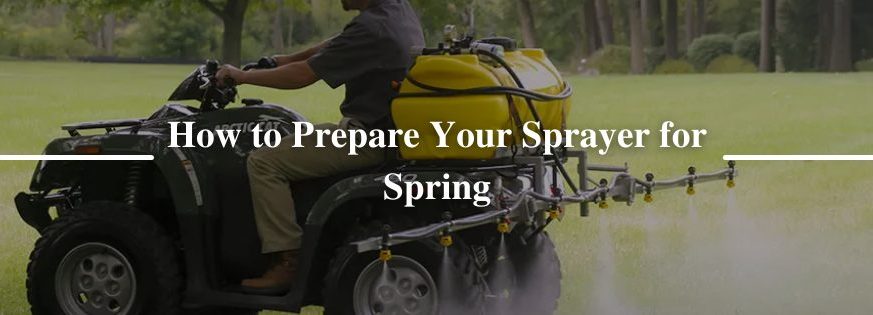
Published April 2, 2022. Updated April 10, 2024.
When it’s time to begin preparing for spring, you should always keep your spray equipment at the front of your mind. Preparing it for the new crop season requires care and planning.
When done right, preparing your spray equipment can prevent downtime and maximize efficiency. Simplify the process and complete it efficiently by following a few basic steps.
4 Steps for Preparing Your Spray Equipment for Spring
While the exact order and time to complete these processes can vary, ensure you complete each before using your sprayer for the first time this spring.
1. Visual Inspection
When you start preparing your sprayer for spring, you should visually inspect the machine. By walking around your sprayer and looking at all the parts and bolts, you can start to tell if the equipment incurred any damages. For sprayers with tires, check for proper inflation levels.
You should also inspect the following:
- Hoses
- Fittings
- Clamps
- Boom suspension
- Cables
- Ground speed sensors
- Oil and coolant levels
- Electronic equipment
Always repair or replace anything worn or broken, and tighten all bolts before running your machine.
2. Cleaning
Once you’ve performed a visual inspection on your equipment, it’s time to get into the cleaning process. It’s essential to complete the cleaning process before spring to ensure your sprayer works at its best, especially after it’s been sitting in storage all winter.
Complete the following steps to clean your equipment effectively:
- Clean sprayers on the tank and boom. You will want to remove all herbicide residue. Replace if necessary.
- Put clean water through the sprayer’s lines to flush all antifreeze from the system. Running water through the system will also alert you to plumbing leaks and damages.
- Clean all system screens, including boom line, main system and nozzle screens.
- Wash all spray nozzles and use this time to check the flow rates. Replace as necessary.
3. Testing
After you’ve repaired all noticeable issues and cleaned your sprayer, the next step is to perform testing. You will want to check the following:
- Flow meter
- Control valves for the boom and flow
- Automatic and electric rate controls
- Implement lights
To test your sprayer’s functionality, you should fill the water tank and run the spray gun and broom. When you try using these parts, you will notice inadequate performance, breaks or leaks, allowing you to fix them right away and test them again.
4. Calibrate
You will also need to calibrate different parts of your equipment. The owner’s manual for the machine will outline the specifics of this process for your sprayer. You should calibrate the speed sensors, nozzles and flow meter using water.
Contact CropCare® Sprayers for Support or Purchase
CropCare® sprayers are built to last. We designed them to ensure you can spray precisely how and when you want. We offer product and technical support for all our equipment.
If you need a sprayer or would like to replace the one you currently own, please find your local dealer to purchase CropCare® products today.


